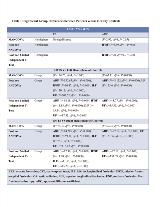Implications of White Matter Changes in MTLE-HS Syndrome: Is MTLE-HS a Progressive Disease?
Abstract number :
3.257
Submission category :
5. Neuro Imaging / 5B. Functional Imaging
Year :
2018
Submission ID :
505910
Source :
www.aesnet.org
Presentation date :
12/3/2018 1:55:12 PM
Published date :
Nov 5, 2018, 18:00 PM
Authors :
Ashalatha Radhakrishnan, R. Madhavan Nayar Center for Comprehensive Epilepsy Care and Anuvitha Chandran, R. Madhavan Nayar Center for Comprehensive Epilepsy Care
Rationale: It has been shown earlier in small series that TLE is associated with white matter (WM) abnormalities that are extensive and bilateral, even in patients with unilateral mesial temporal sclerosis (MTS) Patients with TLE without any lesion in MRI have also demonstrated to have diffusion tensor imaging (DTI) abnormalities of WM .What is not clear is the implication of these WM abnormalities in clinical practice and how they help in the diagnosis or prognosis or management of patients with TLE.1. We studied the extent of WM abnormalities through diffusion imaging tractography (DTIT) in a large cohort of patients with TLE with unilateral MTS /hippocampal sclerosis (MTLE-HS).2. If such WM abnormalities are seen widespread outside the temporal lobe, we then analysed the significance of these abnormalities clinically in terms of the patients studied as compared to controls. Methods: DTI measurements were obtained from tractography for arcuate fasciculus, cingulum, corticospinal tract, inferior longitudinal fasciculus; inferior frono-occipito fasciculus, optic radiation, superior longitudinal fasciculus and uncinate fasciculus in 50 patients with MTLE-HS and were compared to 50 age and sex-matched controls. The Statistical Package for the Social Sciences software (Version 17.0; SPSS, Chicago, Illinois, USA) was used for data analysis. Diffusion parameter values (fractional anisotropy (FA) and apparent diffusion co-efficient (ADC) of RMTS, LMTS and controls were compared using multivariate analyses (MANCOVA). MANCOVA were performed between group means for four white matter tracts (ARF, IFOF, ILF, UF) were treated as dependent variables. Groups (LMTS, RMTS and controls) and hemisphere was taken as independent variables with age as a covariate. MANCOVA was performed separately for FA and ADC. In case of a significant group effect (P < 0.05). post hoc ANCOVAs were calculated for each tract separately. Dependent variables were FA/ADC, and independent variables and covariates were the same as in the MANCOVA. In case of a significant group effect for a tract in the ANCOVA, 2-tailed independent t tests were performed to investigate whether group differences appeared for both or for one hemisphere only. The Pearson coefficient correlation was used to calculate the correlation between different tracts with age and duration of epilepsy. A p value less than 0.05 was considered as statistically significant. Results: Compared to controls, significant differences in FA values of arcuate fasciculus, inferior fronto-occipital fasciculus, and optic radiation and ADC value of optic radiation in right hemisphere of right MTS patients was noted. In left MTS patients, significant differences were found in both FA and ADC values of cingulum, inferior frono-occipito fasciculus tracks and FA value alone in optic radiation of left hemisphere. Paired t-test compared the tracts in the affected left and right hemisphere of patients with corresponding left and right hemisphere in controls. Conclusions: Our finding indicates widespread WM degeneration in areas away from temporal lobe in other parts of limbic system in chronic temporal lobe epilepsy. The existence of such a diffuse epileptic network is probably one of the reasons for a less than optimal expected 100 % outcome in patients even when a very focal abnormality like hippocampal sclerosis is resected for drug-resistant epilepsy. Funding: None

.tmb-.jpg?Culture=en&sfvrsn=9ce77871_0)